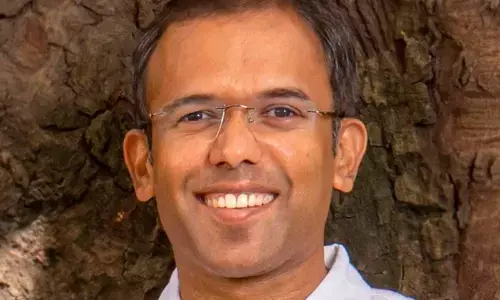Time for a holistic approach to democratise innovation

Time for a holistic approach to democratise innovation
Covid-19 demonstrated the scope for scaling up the use of online learning tools that require a strong digital literacy
Innovation today is not as far from us as we ostensibly presume. The divides between producers and consumers and innovators and beneficiaries are no longer stable. In this backdrop, it is time we realise that these constructs do not work on multiple levels.
Vern Burkhardt, writing for a noted publication, states that while the term 'consumer' implies that users are just that - 'consumers', there is strong evidence that 10 to 40% of individual and corporate consumers engage in product development and modification of standard products offered by manufacturers. At the same time, technology has come up with tools to innovate that are accessible, opening the domain up for more interventions where individuals can innovate at affordable costs.
How do these realities reconcile themselves with the regimen of traditional producer vis-à-vis conventions of working? Also, if innovation is indeed, to a certain degree, democratised today, how do we aid this democratisation to benefit all stakeholders? An answer to this question requires a holistic approach.
The definitions of democratising innovation vary from Eric von Hippel's emphasis on technology being an enabler for individuals in their innovation endeavours to Philippe Davidson's stress on collaboration being the way to democratise innovation in organizations. These technology and organization privileging approaches can be juxtaposed to consider all aspects of the situation. Eric von Hippel, notes in an interview, "The tools for designing high-quality innovations are getting so cheap and so ubiquitous that individuals can innovate for themselves at a steadily higher quality and at a steadily decreasing cost. These sophisticated modern tools are computer-based and require relatively little training. As a result, even hobbyist users find they can use them to design new products and services."
On the other hand, Davidson in his book 'Democratizing Innovation in Organizations', remarks "Collaboration in innovation necessarily means that several people have a say in the innovation endeavor that is under development. […] These stakeholders could include customers or the people defending their interests in their name, managers at all levels, team members, suppliers and partners in the value chain, government regulatory agency officials and often several more. […] Optimising the value generated by innovation means finding a happy balance between all these interests. Therefore, innovation carried out by groups of people involves two key considerations: (i) that the ideas be developed and refined through thought-provoking discussions, and (ii) that group decisions be made through discerning deliberations that could involve negotiations. Hence, to carry out these activities effectively and efficiently, innovators must be-come skilled deliberators and negotiators."
These scholarly observations indicate that technology can be a tool to democratise innovation and, at the same time, workers and stakeholders must be able to have meaningful conversation to make an innovative collaboration unfold democratically. Workers and individuals must be adept practitioners of technology to innovate while also being pragmatic negotiators to let the innovation project, which, in one way or the other, involves other actors, to realize a favourable impact. For enabling both these things, training, structural changes and infrastructural support hold the key.
For instance, Zia Qureshi notes how to enable workers to update skills, one approach is through Lifelong Learning Accounts, introduced in France and Singapore, in which workers accumulate rights to training that are portable across jobs. More flexibility can be built into government student-aid programs, including grants, loans and tax incentives so that they benefit not just first-time college entrants but also returning older adults. Furthermore, the potential of technology-enabled solutions must be harnessed. Qureshi cites how Covid-19 demonstrated the scope for scaling up the use of online learning tools to assert that broader access to these tools will require a stronger foundation of digital infrastructure and digital literacy. In a nutshell, the foundational and collaborative aspects of democratizing innovation can both be strengthened through a judicious combination of training and infrastructural development.
To truly let the world of innovating open its doors to as many people as possible, we need to build a reliable foundation whereby they can negotiate with stakeholders and actors as the project takes off and realizes itself. With collaboration and learning at the core of such efforts, innovation can, and should, certainly be democratised.
(The author is Founder and CEO Upsurge Global and Adjunct Professor and Advisor EThames College)



















